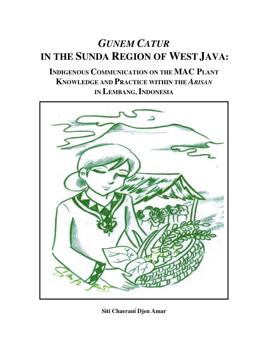2010-10-19
Gunem catur in the Sunda region of West Java: indigenous communication on the MAC plant knowledge and practice within the arisan in Lembang, Indonesia
Publication
Publication
The introduction demonstrates that medicinal plants obviously play an important role in health care in Indonesia. Apart from the lack of access to the modern health care system by, the larger segment of the population, the cultural appropriateness of local herbal medicine is a major factor in the predominant use of traditional medicine. The people of Indonesia have used medicinal, aromatic and cosmetic (MAC) plants - often in the form of plant parts mixtures called jamu - in their daily lives from time immemorial. While currently, there is a growing threat of loss of such knowledge, especially of the utilization of MAC plants, the government shows some concern about the exchange of information and communication on MAC plants which would not only safeguard the cultural identity of the nation, but also provide a useful alternative to Western medicine. Hence, the general aim of this study is to document and analyse the factors involved in the process of communication behaviour on MAC plant knowledge and practice among members of a local social organization arisan in the research area. Thus, an analysis is conducted of the role of various categories of factors which appear to be involved in this complicated communication process from the local people's point of view, in which particular attention is paid to the (invisible) factors which seem to play a determinant role leading to the patterns of communication behaviour in the arisan. The focal point of the study is Lembang in the Province of West Java, a mountainous area with communities scattered on the slopes of the mountains.
| Additional Metadata | |
|---|---|
| , , , , | |
| hdl.handle.net/https://hdl.handle.net/1887/16092 | |
| Organisation | Staff publications |
|
Djen Amar, S. (2010, October 19). Gunem catur in the Sunda region of West Java: indigenous communication on the MAC plant knowledge and practice within the arisan in Lembang, Indonesia. Retrieved from https://hdl.handle.net/1887/16092 |
|
